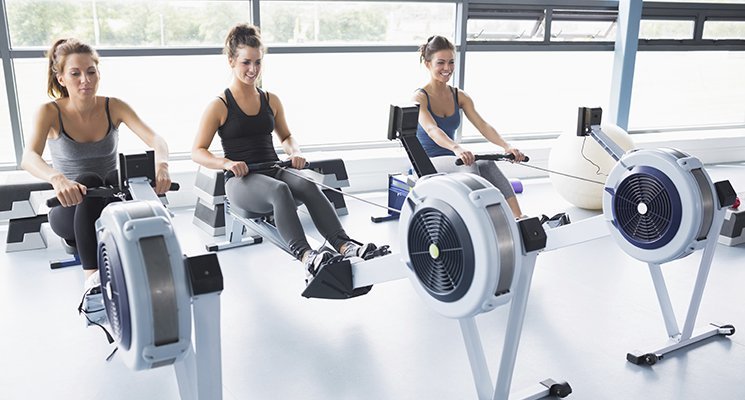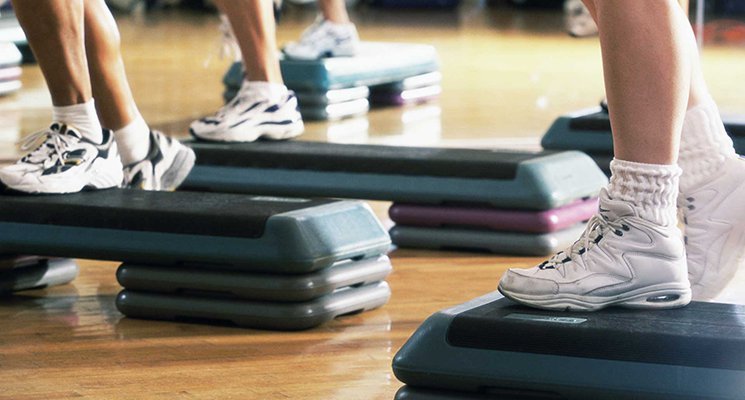When I was in college, there were two stationary bikes in the gym’s cardio room. One of them had a tiny little screen that allowed you to set the number of miles you wanted to log or the amount of time you wanted to exercise; it also had a primitive graphic, like something from an Atari 2600 video game, that let you visualize your course: up “hills”, down “valleys”. That was the high-tech bike. The other one had a wheel that looked kind of like a giant fan. There were no screens or graphic-based interfaces attached to it; you just got on and pedaled.
I haven’t seen my college gym in, ahem, a very long time, but, given the pressure on colleges and universities to supercharge their fitness and recreation offerings, I imagine it’s a much more polished (and much more visited) place than it was back in the day. Two stationary bikes, one of which apparently was built in 1897? There’s no way they’d get away with that anymore. What with the growing popularity of spin classes in the past decade, I imagine the college rec center has a whole room dedicated to sleek-looking stationary bikes now, and the bikes are probably equipped with the latest digital enhancements that give their riders a full dossier of personal health data.
My point is, fitness centres have to keep up with changing fads, and this is true whether they’re on college campuses, independently owned, or part of a corporate wellness program. They have to do aerobics when people want aerobics, host Zumba classes when there’s excitement about Zumba, and so on. All well and good, but how exactly should a fitness center keep on top of changing trends when those trends involve deep-pocket investments in big, expensive pieces of equipment? Athletic Business magazine posted an interesting article on this topic a couple months ago, focusing on the growing popularity of rowing machines. One fitness industry veteran interviewed for the article put it this way: “Rowing will never be group cycling, but it is gaining its place with more hard-core fitness enthusiasts.” CrossFit aficionados have brought it nearly into the mainstream, and more and more gyms and fitness centres are increasing their stock of rowing machines, even lining them up and creating classes à la spinning classes.
But what if you’re a small outfit that can’t afford a whole roomful of new rowing machines? What if you don’t have the space for many large pieces of new equipment? How do you give your clientele the most up-to-date, exciting workout experience — the one they’ve been hearing so much about from friends and through advertisements, the one being touted at a rival fitness center down the street — if you don’t immediately have the resources for that kind of development?
As Athletic Business says, “To be sure, fitness facility owners needn’t run out and invest in a fleet of rowers, but nor should they continue to assume their current mix of cardio equipment is adequate to meet their members’ expectations.” That is, you have to focus on finding a balance. Then you have to make a plan for growth. Maybe you can start out by making space for one or two rowers. Keep close tabs on them: Make a note every time someone uses them. Note when they are empty for long stretches of time. Observe whether a line of people waiting to use them frequently forms.
Survey your clients to find out whether they’ve used them, when they did, for how long, and how they liked the experience. Ask whether they would sign up for a rowing class if one were offered. Set up a temporary class with a very limited enrollment (even just three or five would be okay). How is it received? What would participants change? Do they want more?
A business can’t change its programs and equipment the way teenagers change clothes — adoption of new fads should happen slowly, after testing, focus-group research, data-gathering, and trial-and-error. After you’re convinced that a fad is here to stay, and after you’ve conducted adequate research among your user base, then you can take the plunge and buy the equipment. Just make sure that when you do you’re keeping half an eye on the next emerging trend, because you’ll want to start researching that one too.
Oh, one last thing. After writing this I got curious and called my alma mater’s athletic center. I was told they recently ordered four new rowing machines!









